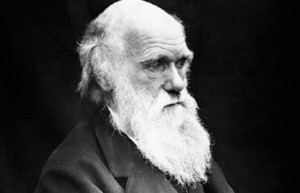If Darwin Could See Us Now

In a recent U. S. District Court decision, Judge John Jones ruled that intelligent design is a theological argument and not science. This religious belief, he said, is “masquerading as a scientific theory” and has “utterly no place in a science curriculum.”
I cannot delve into the vast array of scientific arguments for creationism or the large body of evidence showing that many “facts” formerly thought to support the evolutionary theory have since been proven false or exposed as intentional misrepresentations. I want to examine just one scientific fact—something Charles Darwin understood and wrote about.
In his book, Origin of Species, Darwin appeared to understand that his theory of evolution would be subjected to scrutiny and might be proven false by future discoveries. He wrote,
“If it could be demonstrated that any complex organ existed which could not possibly have been formed by numerous, successive, slight modifications, my theory would absolutely break down.”
Darwin understood that if any bird, animal, or plant were found to have complex and interdependent operating systems that were all essential for the survival of the species, then it could not possibly have evolved over time. If any single essential aspect were missing, underdeveloped, or out of balance, the organism could not survive, let alone become more advanced. This scientific fact is known today as “irreducible complexity.”
Were he alive today, Charles Darwin, an honest and objective scientist, would recognize that his theory of evolution has been disproved by his own stated criteria—the discovery of many plants, animals, and birds that are irreducibly complex.
The giraffe, for example, needs a large and powerful heart to pump blood up his long neck to his brain. But when the giraffe bends down to get a drink, gravity would magnify his blood pressure and burst the vessels in his brain—unless a second operating system were in place. And one is. A series of valves in the main artery to the brain close off sequentially as the giraffe bends down, thus protecting the brain from damage. But even the last section of the artery would contain too much pressure were it not for a third operating system—a sponge-like device at the base of the brain that absorbs the remaining blood and relieves the lethal pressure.
So the giraffe gets a drink without killing himself. But while he is drinking, a lion charges. If the giraffe quickly raises his head to run, the effects of gravity and the closed valves in his neck would cause him to pass out and become lion food. Were it not for the fact that the sponge-like device squeezes oxygenated blood into his brain for this emergency response, while the valves in his neck reopen to allow blood flow from the heart to resume, the giraffe would perish.
Do you see? No massive heart—no blood to the brain—dead giraffe. No valves in the neck artery—lethal blood pressure when getting a drink—dead giraffe. No blood-reserve sponge at the base of the brain—lion attack—unconscious giraffe—dead giraffe. The giraffe must have all three of these systems operating in perfect harmony with one another if he is to survive. If any single system were ever missing, underdeveloped, or out of harmony with the others, the species would have vanished.
Another example is the chuckwalla, a lizard who lives in the deserts of the United States. This lizard’s blood becomes very salty because of what he eats. In fact, it would become fatally salty every day of his life if it were not for a desalinization plant behind his nose. Several times each day, when salt levels become high, the lizard’s blood is diverted so that it passes through this organ where excess salt is removed. The alternative is simple: No desalinization plant—dead lizard—extinct species.
Lastly, consider the woodpecker. This bird has a reinforced beak for poking holes in trees to get at bugs, a shock-absorbing cushion behind the beak to prevent brain damage, and a long sticky tongue for getting the bugs out. No hard beak—no holes in trees—no food—dead bird. No cushion behind the beak—brain damage—dead bird. No long sticky tongue—no bugs—dead bird. One species even has a built-in sheath circling around its head through the bone of its skull for housing the tongue. So which came first in the alleged evolution of the woodpecker: the long tongue, or the sheath for housing it?
Science involves the examination of facts and the formation of reasonable, rational conclusions based on those facts. Scientific examination of creatures such as these leads to only one reasonable, rational, and scientific conclusion: They could not possibly have evolved.
Yet most committed evolutionists brush these findings off as if they were nothing more than annoying mosquitoes. Rather than agreeing with rational conclusions based on scientific facts, they behave more like closed-minded religious zealots. They redefine terms, gloss over solid evidence, and abandon reason in order to preserve their chosen belief system—their “religion,” you might say—one that is “masquerading as a scientific theory” and has “utterly no place in a science curriculum.”
(Romans 1:22)

